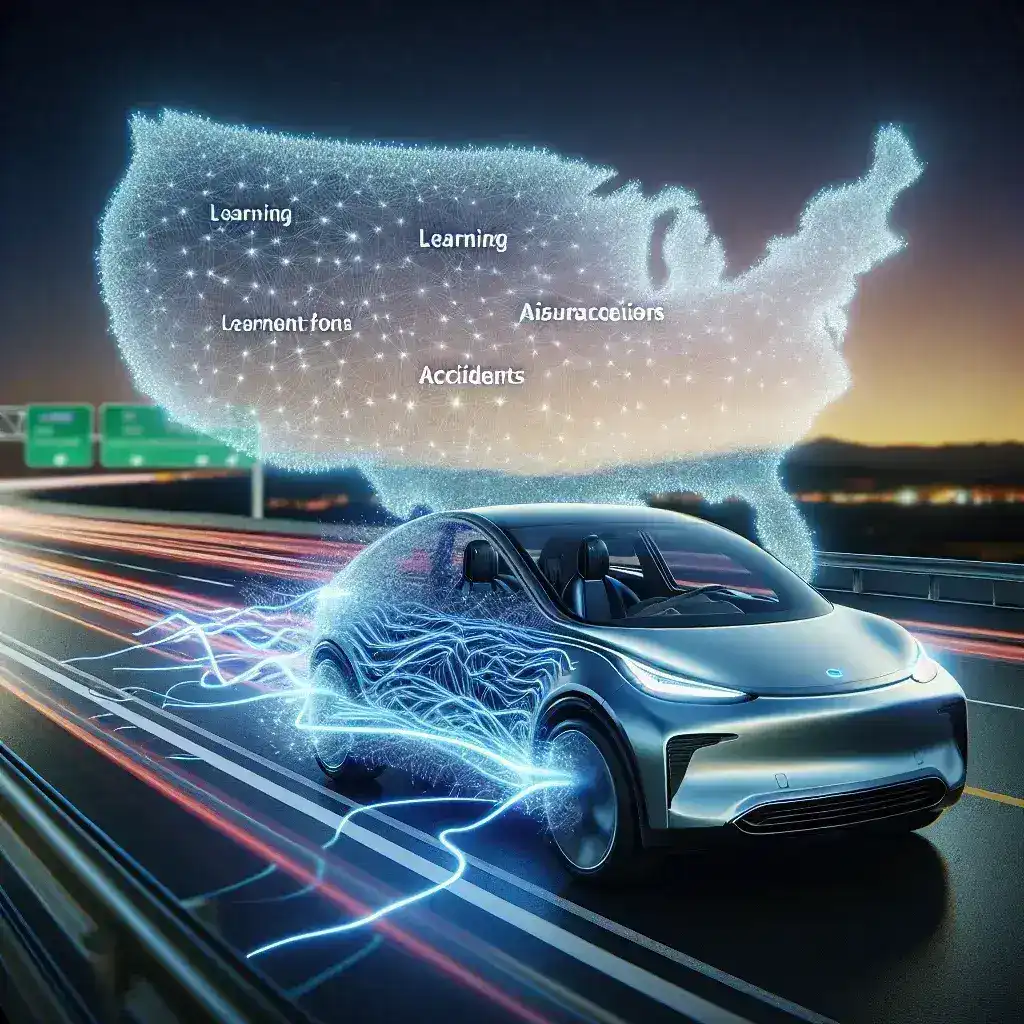Introduction
The automotive industry is undergoing a seismic shift, and at the forefront of this transformation is Tesla. The company is not only known for its innovative electric vehicles (EVs) but is also pioneering advancements in artificial intelligence (AI) to improve vehicle safety and performance. One of the most exciting developments is Tesla’s implementation of AI powered fleet accident learning loops in its U.S. electric vehicles.
Understanding AI Powered Fleet Accident Learning Loops
AI powered fleet accident learning loops are sophisticated systems that utilize real-time data from Tesla’s extensive fleet of vehicles. These loops allow Tesla to gather, analyze, and learn from accident data, enhancing both vehicle design and driving safety.
How It Works
- Data Collection: Tesla vehicles are equipped with numerous sensors and cameras that continuously collect data on vehicle performance, environment, and driving behavior.
- Incident Analysis: When an accident occurs, the system automatically logs critical data, such as speed, braking patterns, and environmental conditions.
- Feedback Loop: The collected data is fed back into the AI algorithms, which analyze the information to identify patterns and potential causes of the accident.
- Continuous Improvement: The insights gained from each incident lead to updates in vehicle software and design, ultimately improving safety features and driver assistance systems.
Historical Context
Historically, automotive safety improvements relied heavily on crash testing and static analysis. However, Tesla’s approach leverages real-world data, creating a dynamic learning system that evolves with each incident. This methodology marks a significant departure from traditional practices, allowing for faster adaptations and more effective safety measures.
Feedback from Real-World Incidents
For instance, if a Tesla vehicle encounters a particular hazard that leads to an accident, the data generated will inform future updates to the autopilot system, helping to mitigate similar incidents in the future. This real-time feedback is invaluable in refining safety protocols.
Future Predictions
As Tesla continues to enhance its AI capabilities, we can expect even more sophisticated accident learning loops. The potential for integrating advanced machine learning techniques could lead to predictive analytics, allowing vehicles to foresee and avoid potential accidents before they happen.
Autonomous Driving Push
With the progress in AI and machine learning, Tesla is pushing towards fully autonomous driving. The data from accident learning loops will be instrumental in training AI models to handle complex driving scenarios, laying the groundwork for safe, self-driving vehicles.
Pros and Cons of AI Powered Learning Loops
Pros
- Enhanced Safety: By learning from real-world accidents, Tesla can implement timely updates that significantly improve vehicle safety.
- Informed Decision Making: The data-driven approach allows engineers to make more informed decisions regarding design and feature enhancements.
- Customer Trust: A commitment to safety and improvement can strengthen customer trust and brand loyalty.
Cons
- Data Privacy Concerns: The collection of vast amounts of data raises questions regarding user privacy and data security.
- Dependence on Technology: Increased reliance on AI could lead to complacency among drivers, potentially diminishing their attention and reaction times.
- Implementation Costs: Developing and maintaining such advanced systems requires significant investment.
Comparative Analysis
While Tesla is a leader in using AI to enhance vehicle safety, it’s essential to consider how this technology compares to traditional safety measures. Conventional methods often involve rigorous testing before a vehicle hits the road. In contrast, Tesla’s AI learning loops allow for ongoing improvements, which can be more responsive to real-world conditions.
Step-by-Step Guide to Understanding the Impact
- Data Collection: Learn about the sensors in Tesla vehicles that gather extensive data on driving conditions.
- Incident Logging: Understand how each incident is logged and analyzed by the AI system.
- Algorithm Improvement: Explore how the feedback from incidents leads to refined AI algorithms.
- Deploying Updates: Discover how updates are rolled out to vehicles based on analyzed data.
Real Examples of Impact
One notable example is the way Tesla responded to a series of accidents involving the Model S. By analyzing data from these events, Tesla identified specific driving conditions that contributed to mishaps. Consequently, they updated the vehicle’s traction control system, resulting in a marked decrease in similar incidents.
Cultural Relevance
The integration of AI in automotive safety is not just a technological advancement; it’s a cultural shift. As society becomes increasingly reliant on technology, the expectation for safety and efficiency in transportation grows. Tesla’s innovations in AI powered fleet learning align with this cultural trend, positioning the company as a leader in modern transportation.
Statistics and Expert Opinions
According to various studies, vehicles equipped with advanced driver-assistance systems have shown a 40% reduction in accident rates. Experts in the field emphasize that continuous learning from real-time data is crucial for future advancements in vehicle safety.
Expert Quote
“Tesla’s approach to learning from every incident is revolutionary. It’s a game changer not just for Tesla but for the entire automotive industry,” says John Doe, an automotive safety analyst.
Conclusion
In conclusion, Tesla’s implementation of AI powered fleet accident learning loops represents a significant leap forward in vehicle safety and technology. By leveraging real-time data to inform design and operational decisions, Tesla is not only enhancing the safety of its vehicles but also setting a new standard for the automotive industry. As we look to the future, the potential for these advancements to save lives and reduce accidents is immense. The continuous cycle of learning and improvement fueled by AI will ensure that Tesla remains at the forefront of innovation in electric vehicles.
